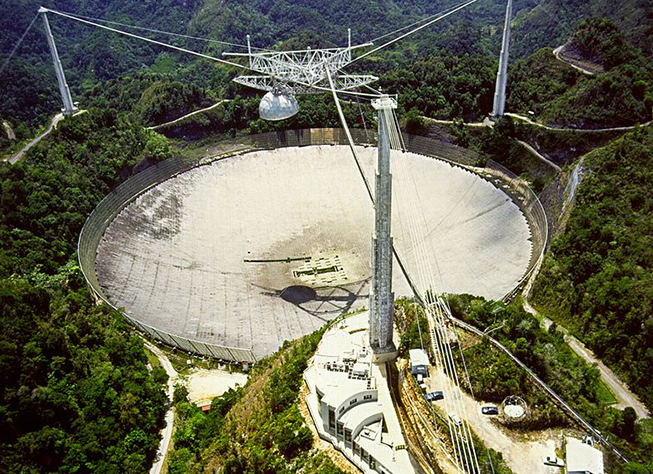On Nov. 6, 1959, Cornell University signed a contract with ARPA to conduct development studies for a large-scale ionospheric radar probe and how such an instrument might also serve in radioastronomy and other scientific fields. Four years later, on November 1, 1963, an inauguration ceremony was held in Arecibo, Puerto Rico, for the Arecibo Ionospheric Observatory, later to be known more generally as the Arecibo Observatory.
Its telescope "dish"—the largest in the world until 2016 with the completion in China of the FAST dish telescope—is 1,000 feet (305 meters) in diameter, 167 feet (51 meters) deep, and covers an area of approximately 20 acres (0.08 square kilometers). Development of the Arecibo facility was initially supported as part of the DEFENDER program, a broad-based missile defense program. The observatory was designed to study the structure of the upper ionosphere and its interactions with electromagnetic communications signals.
The observatory became part of the National Astronomy and Ionosphere Center (NAIC), a national research center operated by SRI International, the Universities Space Research Association (USRA), and Universidad Metropolitana (UMET) through a cooperative agreement with the National Science Foundation (NSF). Researchers tapped the observatory for their studies of ionospheric physics, radar and radio astronomy, aeronomy, and dynamics of the Earth’s upper atmosphere. The facility also helped NASA select lunar landing sites as well as landing sites for the Viking missions to Mars. In 2020, a series of cable failures culminated in a collapse of the structure on December 1, dramatically highlighting the end of one of the country's great scientific facilities.
